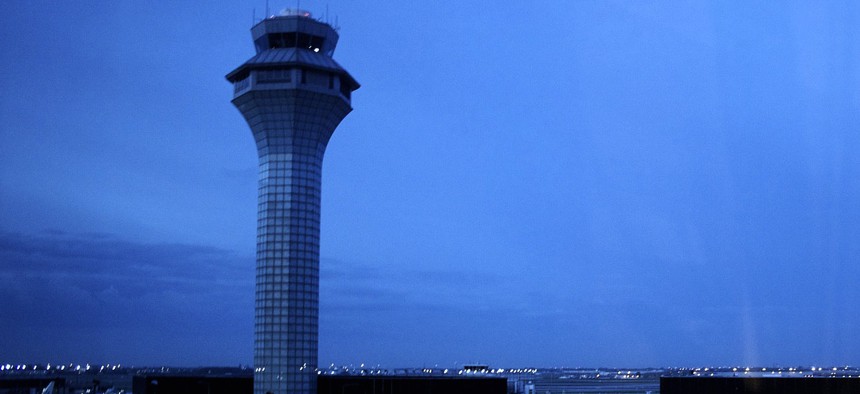
Flickr user Niklas Hellerstedt
The Playbook for Privatizing Air Traffic Control Already Exists
Policymakers and the FAA should look closely at lessons from the agency’s last big privatization push.
If you can get beyond the rhetoric, there are serious, practical issues to be considered when deciding whether to privatize America’s air traffic control function. To some, the idea sounds downright crazy. But it may surprise many people that the Federal Aviation Administration has undertaken a similar effort already. And there’s a lot we can learn from that experience.
In what remains the largest federal civilian privatization resulting from the Office of Management and Budget’s Circular A-76 process, in 2005 the FAA outsourced operation of its Automated Flight Service Stations, from which general aviation pilots receive weather briefings and other information on flying conditions. Performance improved, much-needed enhancements to automation were implemented on time and within budget, facilities were both modernized and consolidated, and billions of dollars were saved for the American taxpayer.
There’s no guarantee that will happen with the significantly more complex air traffic system. However, to improve the chances of success, here are five important factors for decision-makers to consider as they decide whether to privatize this important function:
Clarify who is accountable and for what. Few people understand the breadth of critical activities that the FAA performs today, including the complex system architecture that supports it. The organization not only operates the country’s air traffic control system, but certifies pilots, works to control aircraft noise, oversees the construction and operation of airports, and collaborates with other critical agencies and departments. Before deciding to outsource all or part of this vital organization, it will be important to provide clear boundaries on the complex interconnections that exist today, separate what’s inherently governmental from what’s not, and consider what may need to be realigned.
Oversight is not an afterthought. The residual organization that will provide oversight and continue to perform inherently governmental activities must be at the forefront in the design of the new structure, not an afterthought. In order to retain trust in the system that keeps American air travel safe, its governance must entail strong, capable, independent oversight. This must be built into the new concept, designed from the ground up in a cost-effective manner.
Follow the money. Privatizing can improve performance and save money. But if the new air traffic organization suddenly loses revenue, and has to retain or bear additional costs, the taxpayers could end up on the losing end of the bargain. Policymakers should understand in great detail what drives both costs and revenues today, what the drivers will be in the new arrangement, and then follow up to ensure costs and revenues are materializing as expected.
Determine liability structure. America’s air traffic is not only among the busiest in the world, it’s also among the safest. Unfortunately, accidents happen. Determining a feasible and appropriate liability structure in the new air traffic control organization will be critical to ensure a laser focus on making air travel even safer than it is today.
Engage stakeholders. The ecosystem that makes up today’s air traffic control system is complex and involves myriad stakeholder groups. These include employees and their unions, Congress and its committees of jurisdiction, airports, airlines, pilots and the many organizations that represent them, and, of course, the flying public. Clear, constant, transparent engagement with all these groups will be an important factor in the new entity’s success.
Even if all these factors are addressed adequately, there’s a long road from when policymakers decide to privatize portions of our air traffic control operation and when we can call it a success. Transitioning from the current to the new organization will be time-consuming and complicated. Merging the current workforce into a new entity will be arduous and expensive, and presents a major risk to air traffic control during the changeover. As in past government reorganizations, managing the change process effectively will be essential.
A high-performing, privately led air traffic control organization can ensure and improve safe and efficient air travel. But a lot of things can trip it up, too. Referring to the playbook from past privatization efforts can help improve the chances of success.
Eric Heffernan is a principal with Grant Thornton Public Sector. In that role, he supported the Federal Aviation Administration in the planning, design, implementation and monitoring of the public-private competition for the Automated Flight Service Station function. He also has supported the FAA in applying innovative approaches in the areas of lifecycle acquisition and workforce optimization.
Photo: Flickr user Niklas Hellerstedt






